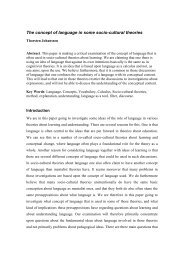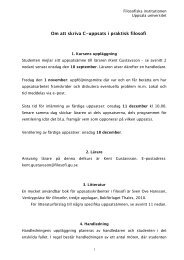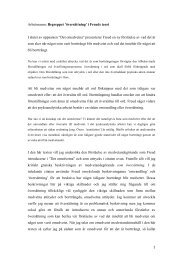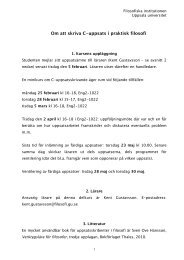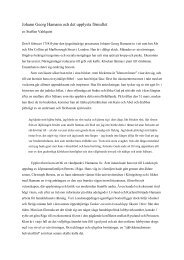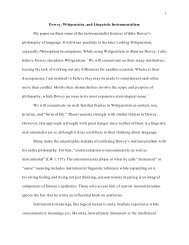Formal Logic, Models, Reality
Formal Logic, Models, Reality
Formal Logic, Models, Reality
You also want an ePaper? Increase the reach of your titles
YUMPU automatically turns print PDFs into web optimized ePapers that Google loves.
(x) G(x)If there is a unique individual which is godlike, then(5-4) (x) G(x) = {God}If there is no godlike entity,(5-5) (x) G(x) = where '' represents the empty set. If there is more than one godlike entity God 1 ,God 2 , …, God n , then(5-6) (x) G(x) = {God 1 , God 2 , …, God n }Quine claims some advantages of his approach over Russell's. The definite description(x) G(x) always refers to one unique object irrespective of whether there is nogod, there is one god, or there are several gods. We can use name of deities if onlysuch names only occur under set brackets. The monotheistic standpoint can be representedby (5-2) or by (5-4), the atheistic standpoint can be expressed by (5-3) orby (5-5), and the polytheistic standpoint by (5-6).2.6 REMARK. (I) Like Russell, Quine circumvents the problem by using definitedescriptions rather than solving it. In ordinary language, 'God' is used as a propername in the predicate logical language itself and not only under set brackets. Quineought to show how this procedure can be transferred to formal languages. If this cannotbe done, it would be an indication of a much larger difference between naturallanguages and formal languages than logic fans like Quine usually are willing to admit.(II) From (5-4), (5-5) and (5-6), it is possible to derive by elementary logic the existenceand uniqueness results(6-1) y y = (x) G(x)(6-2) y z (y = (x) G(x) z = (x) G(x) y = z)as valid irrespective of whether there is no god, exactly one god, or several gods.From (5-4) and (5-5), we can see that what exists uniquely is either the set {God} orthe empty set and similarly for (5-6). Suppose '(x) G(x)' follows the logic of definitedescriptions in the classical sense. Then the individual denoted by '(x) G(x)' isdetermined uniquely as an entity satisfying the predicate 'G'. Therefore (6-1) implies(6-3) y G(y)which is incompatible with the claim that (6-1) is valid even when there is no god.Consequently, Quine's definitions (5-4) and (5-5) imply that Quine's '(x) G(x)' is nota definite description in the classical sense. The uniqueness clause (6-2) follows from(5-6) though uniqueness is incompatible with polytheism. The logic of definite descriptionsexcludes the possibility of making the stipulations (5-4) and (5-5). By that10



